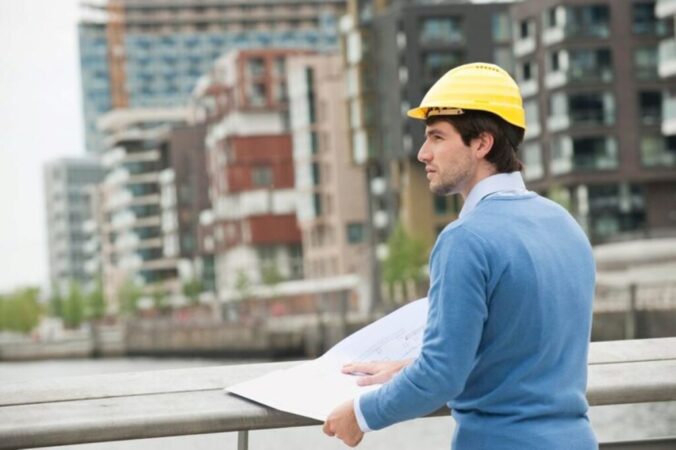Urban landscapes are constantly evolving, and in a bustling city like Sydney, the role of surveyors has never been more critical. With its unique geography, rich history, and rapid development, Sydney presents a myriad of challenges for surveyors. This article delves into the methods and technologies employed by Sydney surveyors to navigate these complex environments, ensuring that urban planning and construction projects proceed smoothly and efficiently.
The Role of Surveyors in Urban Development
Sydney Surveyors play a pivotal role in urban development, providing essential data and insights that inform planning and construction decisions. They are responsible for measuring land, mapping out boundaries, and ensuring compliance with local regulations. In Sydney, where space is at a premium and the urban landscape is continually changing, the demand for skilled surveyors is ever-increasing.
Understanding Land Use and Zoning
One of the primary responsibilities of surveyors is to understand land use and zoning regulations. Sydney’s diverse neighbourhoods each have specific zoning laws that dictate what can be built and where. Surveyors must be well-versed in these regulations to provide accurate advice to developers and architects. This includes assessing the potential for residential, commercial, or mixed-use developments.
Furthermore, surveyors often collaborate with local councils to ensure that proposed developments align with broader urban planning goals. This collaborative approach helps to maintain the character of Sydney’s neighbourhoods while accommodating growth. In addition to zoning laws, surveyors also take into account environmental considerations, such as the impact of new developments on local ecosystems and community resources. This holistic view ensures that urban growth is sustainable and beneficial for all stakeholders involved.
Topographical Surveys and Site Analysis
Topographical surveys are crucial for understanding the physical characteristics of a site. These surveys map out the terrain, including elevations, slopes, and natural features such as trees and water bodies. In Sydney, where the landscape can vary dramatically, topographical surveys help identify potential challenges and opportunities for development.
For instance, a site located near the coast may require additional considerations for erosion and flooding, while a site in the hills may present challenges related to accessibility and drainage. By conducting thorough site analyses, surveyors can provide invaluable insights that inform design decisions and construction methods. Additionally, these analyses often involve the use of advanced technology, such as Geographic Information Systems (GIS) and 3D modelling, which allow surveyors to create detailed visual representations of the land. These tools not only enhance the accuracy of surveys but also facilitate better communication between stakeholders, ensuring that everyone involved has a clear understanding of the project’s implications.
Technological Advancements in Surveying
The field of surveying has seen significant advancements in technology, which have transformed the way surveyors operate. In Sydney, these innovations have enabled surveyors to work more efficiently and accurately than ever before.
3D Modelling and Geographic Information Systems (GIS)
3D modelling and Geographic Information Systems (GIS) are two technologies that have revolutionised the surveying profession. 3D modelling allows surveyors to create detailed visual representations of a site, which can be invaluable for planning and communication purposes. These models can illustrate how a proposed development will fit into the existing landscape, helping stakeholders visualise the end result.
GIS, on the other hand, enables surveyors to analyse spatial data and make informed decisions based on various factors, such as demographics, environmental impacts, and infrastructure. By integrating GIS into their workflows, Sydney surveyors can provide comprehensive analyses that support sustainable urban development. The ability to layer different types of data—such as zoning regulations, historical land use, and ecological considerations—allows for a more holistic approach to urban planning, ensuring that developments are not only feasible but also beneficial to the community.
Laser Scanning and Drones
Laser scanning technology has become increasingly popular among surveyors for its ability to capture highly accurate measurements of complex structures and landscapes. In urban environments like Sydney, where traditional surveying methods may be challenging due to obstacles and safety concerns, laser scanning provides a safe and efficient alternative.
Drones have also emerged as a valuable tool for surveyors, allowing for aerial surveys that can cover large areas quickly. This technology is particularly useful for monitoring construction progress, assessing land use, and conducting inspections in hard-to-reach locations. The combination of laser scanning and drones enhances the accuracy and efficiency of surveying processes, ultimately benefiting urban development projects. Furthermore, the data collected by drones can be processed in real-time, enabling immediate feedback and adjustments to be made during the surveying process. This agility not only saves time but also reduces costs, making it an attractive option for developers and contractors alike. As these technologies continue to evolve, the potential for even greater precision and efficiency in surveying practices is bound to reshape the landscape of urban development in Sydney and beyond.
Challenges Faced by Sydney Surveyors
Despite the advancements in technology, Sydney surveyors face numerous challenges in their work. These challenges can stem from the city’s unique geography, regulatory environment, and the complexities of urban development.
Complex Urban Infrastructure
Sydney’s urban infrastructure is intricate, with a network of roads, railways, and utilities that can complicate surveying efforts. Surveyors must navigate these existing structures while ensuring that their work does not disrupt essential services. This often requires meticulous planning and coordination with various stakeholders, including utility providers and local authorities.
Moreover, the presence of heritage buildings and sites adds another layer of complexity. Surveyors must be aware of heritage regulations and work within the constraints imposed by these protections, ensuring that any new development respects the historical context of the area.

Environmental Considerations
Environmental factors also pose significant challenges for surveyors in Sydney. The city is home to a diverse range of ecosystems, and any development project must consider its potential impact on the environment. Surveyors are tasked with conducting environmental assessments to identify potential risks and develop strategies to mitigate them.
In recent years, there has been a growing emphasis on sustainable development, which requires surveyors to incorporate environmental considerations into their planning processes. This includes assessing factors such as biodiversity, water management, and climate resilience, all of which are crucial for the long-term sustainability of urban environments.
See Also : How Sydney Land Surveyors Ensure Accurate Property Boundaries
The Future of Surveying in Sydney
As Sydney continues to grow and evolve, the role of surveyors will be increasingly important. The demand for skilled professionals who can navigate the complexities of urban landscapes is expected to rise, driven by ongoing development projects and urban renewal initiatives.
Embracing Innovation
The future of surveying in Sydney will likely be characterised by continued innovation. As technology advances, surveyors will have access to even more sophisticated tools and techniques that enhance their ability to gather data and analyse urban environments. This may include the integration of artificial intelligence and machine learning into surveying processes, enabling more accurate predictions and analyses.
Furthermore, the increasing focus on sustainability and climate resilience will shape the future of urban planning and development. Surveyors will play a crucial role in ensuring that new projects align with these goals, helping to create more liveable and environmentally friendly urban spaces.
Collaboration and Interdisciplinary Approaches
The complexities of urban development require collaboration among various disciplines, including architecture, engineering, and environmental science. Surveyors will need to work closely with professionals from these fields to ensure that projects are well-coordinated and meet the diverse needs of the community.
This interdisciplinary approach will not only enhance the quality of urban developments but also foster a greater understanding of the interconnectedness of various factors that influence urban landscapes. By working together, professionals can create more holistic solutions that benefit both the environment and the community.

Conclusion
Surveyors in Sydney are essential to navigating the complexities of urban landscapes. Their expertise in land measurement, zoning regulations, and advanced technologies enables them to provide valuable insights that inform urban development. As the city continues to grow, the role of surveyors will be increasingly vital in ensuring that developments are sustainable, efficient, and respectful of the unique character of Sydney.
By embracing innovation and fostering collaboration, Sydney surveyors are well-equipped to tackle the challenges of the future, contributing to the creation of vibrant, liveable urban spaces that meet the needs of a diverse population.



